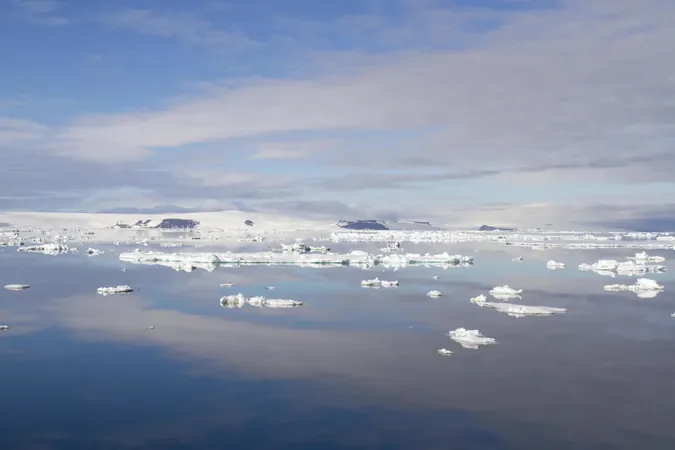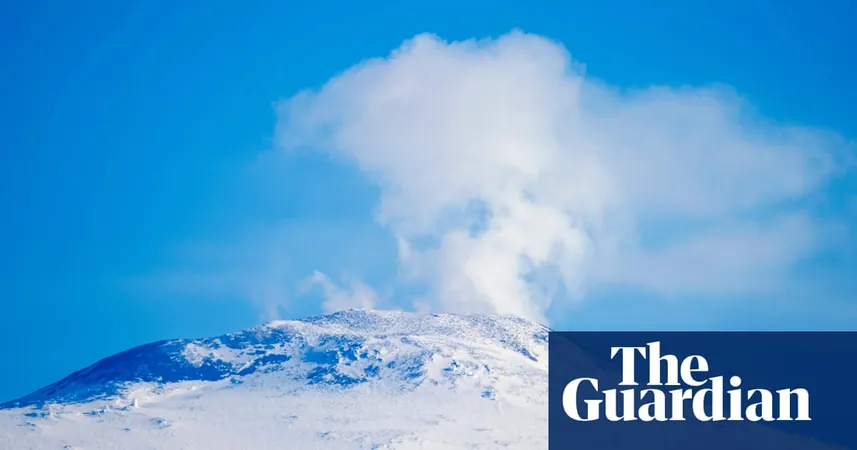
Doomsday Glacier: Scientists Sound the Alarm on Accelerated Melting and Its Dangers
2024-09-20
Author: Wai
Introduction
The Thwaites Glacier, ominously nicknamed the "Doomsday Glacier," is facing a terrifying prognosis as scientists warn that its retreat is set to occur “further and faster” than previously anticipated, posing significant risks to coastal communities worldwide.
Research Findings
Dr. Ted Scambos, a leading glaciologist from the University of Colorado, expressed profound concern on the future of this massive ice formation. "Towards the end of this century, or into the next, it is very probable that we will see a rapid increase in the amount of ice coming off of Antarctica," he stated. The grim consensus among researchers is that the Thwaites Glacier is on a path toward inevitable collapse.
Results from six years of meticulous research by the International Thwaites Glacier Collaboration—a team of over 100 scientists—paint a stark picture. The glacier, roughly equivalent in size to the state of Florida, threatens to contribute approximately 65 centimeters (around 26 inches) to sea level rise when it eventually succumbs to melting. However, estimates suggest that accounting for the ice drawn from surrounding glacial basins, the total sea level rise could soar to nearly three meters.
Current Situation
Frighteningly, data indicate that the volume of water pouring into the oceans from Thwaites and its neighboring glaciers has doubled from the 1990s to the 2010s. Currently, about one-third of the glacier's front is protected by a thick floating ice shelf that serves as a barrier to ice flow. Yet, Dr. Scambos warns that this protective layer is disintegrating quickly, and within the next few years, it may break apart, unleashing large icebergs and exposing the glacier's front. While this immediate exposure may not lead to a sudden spike in melting, it will certainly change the ocean's interaction with the ice shelf, expediting the melting process.
Geological Changes
Geological barriers known as deep ridges in Antarctica are also losing their effectiveness. These natural formations previously provided a “resistive force” against the ice, slowing its descent into the ocean. However, as Thwaites collapses, it will no longer be anchored by these ridges, resulting in even greater volumes of ice entering the ocean.
Impact of Tidal Activity
One of the most alarming discoveries from the collaboration is the influence of tidal activity around the glacier. Warmer seawater is being pumped under the glacier at an alarming rate, melting the ice and significantly accelerating the process. “It goes in every day, gets squashed up under the glacier, completely melts whatever freshwater ice it can, and then gets ejected,” explained Scambos, emphasizing the cyclical destruction of ice.
Predictions and Consequences
Additionally, researchers at the University of California, Irvine, predict that the ocean could rise by about 60 centimeters (around 23.6 inches), reflecting the urgency of the matter reinforced by findings from the International Thwaites Glacier Collaboration. The situation is further compounded by the instability of the Greenland ice sheet, which the University of Vermont identifies as the primary contributor to global sea level rise. If Greenland were to melt entirely, predictions suggest an astounding 20 to 25 feet rise in sea levels.
Conclusion
Climate change remains the driving force behind these alarming trends. As global temperatures rise, ocean warming and shifting wind patterns intensify glacial melting. Dr. Scambos states unequivocally, "The main culprit is increasing greenhouse gases in the atmosphere," underscoring the urgent need for action to address climate impacts.
Without significant intervention, scientists project that the Thwaites Glacier could vanish entirely by the 23rd century, raising grave concerns for the future of coastal cities and millions of people living in vulnerable zones. The Doomsday Glacier is indeed a ticking time bomb, and the world must heed the warning before it’s too late.




 Brasil (PT)
Brasil (PT)
 Canada (EN)
Canada (EN)
 Chile (ES)
Chile (ES)
 Česko (CS)
Česko (CS)
 대한민국 (KO)
대한민국 (KO)
 España (ES)
España (ES)
 France (FR)
France (FR)
 Hong Kong (EN)
Hong Kong (EN)
 Italia (IT)
Italia (IT)
 日本 (JA)
日本 (JA)
 Magyarország (HU)
Magyarország (HU)
 Norge (NO)
Norge (NO)
 Polska (PL)
Polska (PL)
 Schweiz (DE)
Schweiz (DE)
 Singapore (EN)
Singapore (EN)
 Sverige (SV)
Sverige (SV)
 Suomi (FI)
Suomi (FI)
 Türkiye (TR)
Türkiye (TR)
 الإمارات العربية المتحدة (AR)
الإمارات العربية المتحدة (AR)